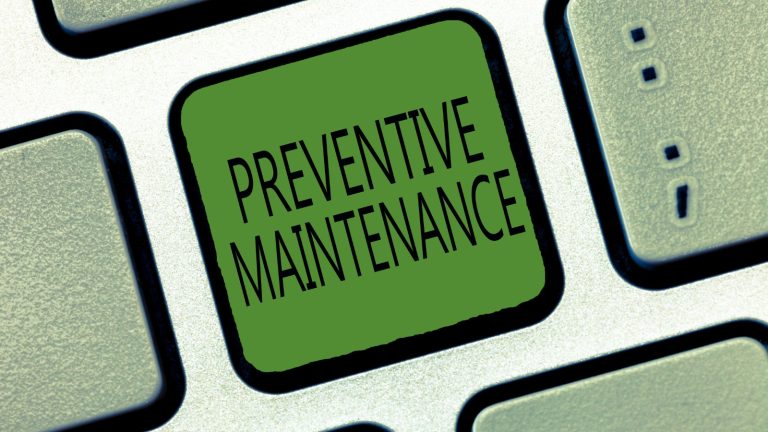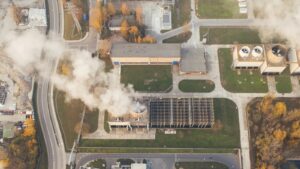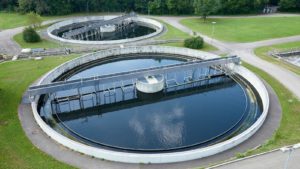Think of the big portion of your budget you keep aside for unexpected machine breakdowns and equipment failures. Rather than reacting to such errors, can you successfully identify the probability of them in advance? Why not? This is where the ‘Preventive Maintenance Schedule’ comes into play. The prime focus of developing such a robust concept in the industrial world is to foresee the future through small signals and seal any loopholes before they become much bigger problems. Yet, many companies lack the knowledge to make this a success.
In this article, we explore how to create a preventive maintenance schedule from scratch.
What is the Preventive Maintenance Schedule?

- A preventative maintenance schedule is a predetermined list of regular maintenance operations and inspections conducted on assets to maintain them in good operating order. A maintenance manager or supervisor must balance the demands of the assets and facilities with the resources at hand in order to implement a preventative maintenance programme.
- If we look into the elements that will be present in a well-designed plan, there must be accurate sets of instructions to help technicians with maintenance and inspections, along with timelines that specify how often preventative maintenance should be done and when a maintenance task should be finished. Another requirement is keeping enough stock and replacement parts for an unexpected repair.
- The list is not limited to material things. As the maintenance manager, it is your responsibility to ensure that you are well aware of your maintenance team’s availability and skills first. You also need to create a proper maintenance plan, in which you have assigned critical tasks to the right workers based on their availability and skills.
6 Comprehensive Steps to Creating a Preventive Maintenance Schedule

Review the Inventory of the Assets
As the first step, when you evaluate your company’s inventory, it is always better to keep in mind that each inventory item you have does not need regular maintenance. If you have doubts about its requirement of receiving upkeep, you can conduct a self-assessment by asking these questions.
You must consider whether it is essential to your company’s success, whether there are any failure modes that may be avoided with routine inspections and maintenance, and whether ageing will negatively impact its failure.
You should include it in your inventory list if you selected ‘yes’ for any of these questions. Make sure to record information about each object while you take inventory.
When creating this list, the most essential aspects you must include are location, spare parts, manufacturer, model, serial number, and maintenance history. It is best if you can come up with a creative catalogue of your assets. You can streamline this work by using maintenance management software, or it is also ideal to keep your inventory list on a spreadsheet.
Prioritise the Assets
It takes time to arrange preventative maintenance for dozens to hundreds of assets. When you set up repair schedules for some of your equipment, it might take months. This is why it is crucial to start with your most significant assets.
If you wonder what the most practical and methodical strategy is to fulfil this requirement, the industrial world always goes with assigning a risk priority number (RPN) for each asset. That is a really simple computation, which follows this formula:
Risk Priority Number = Severity x Occurrence x Detection
When it comes to ‘severity’, this figure shows how seriously a failure will affect your entire operations and is scored from 1 to 10, with 10 denoting higher seriousness. The ‘occurrence’ is where the figure represents the probability that an asset will have the possibility to fail and is graded from 1 to 10. In this case, 10 or a number close to 10 is an alarming situation. When we look into ‘detection’, the latter indicates the probability of determining if an asset will fail. You will get a number between 1 and 10 for this, and no need to say that a figure close to 10 has an increased probability of failure.
You can arrange the assets in rank order from highest to lowest RPN after determining each asset’s RPN.
Calculate the Optimal Preventive Maintenance Frequencies
Every asset will need a distinct frequency of maintenance, as was previously discussed. While a meter-based timetable will work best for some, a floating time-based schedule will work better for others.
Wasting time and money by ‘over-inspecting’ assets is one danger connected to preventative maintenance. Maintaining the effectiveness and efficiency of your team depends on this process phase.
It is good to clear doubts and find out how often each piece of equipment needs to be maintained. You can figure this out by consulting the asset manufacturer’s handbook and past equipment maintenance records. It is pointless to waste time on inspecting the same machine or equipment again and again.
Plan Out Regular Maintenance Activities
If your company’s goal is to produce the most effective preventive maintenance programme, then you can start with planning routine chores and inspections. You can easily initiate them by employing a robust asset management software or, typically, you will only need a spreadsheet, pen and paper.
One of those choices could work better than the others, depending on the size of your company and your maintenance requirements.
In the contemporary industrial world, using a software platform is the most straightforward method of scheduling routine maintenance. You are able to determine the right maintenance frequency and schedule jobs for each asset using such a system.
The software programme or the spreadsheet needs to include a set of instructions and a checklist for preventative maintenance, which your technicians can tick off as they complete the work. However, there is also a possibility that you may forget that you have scheduled a preventive maintenance for a specific asset if you do not keep in touch with the plan.
Collaborate with Your Team for Asset Maintenance
As a manager or even the president of a corporation, you will not be doing these things alone. Rather, you need to rely on your staff to maintain your assets in optimal condition.
This is where your maintenance managers and their team leaders should come together and learn about your new preventative maintenance schedule. Even better, work with your maintenance team to create the maintenance schedule.
When you work on a preventive maintenance framework, always make sure you collaborate with the workers, such as the maintenance specialists or the machine operators, as they have in-depth knowledge of the equipment.
Track and Optimise Your Schedule
Even though you have inspected, reviewed and planned out everything for preventive maintenance, you cannot stop there. The reason is that it is critical to periodically review your maintenance plans.
First, confirm that each item is getting the proper upkeep. You need to then examine the frequency of failures since the preventative maintenance schedule was put into place. You could wish to modify the frequency of maintenance if it continues to malfunction regularly. You can also reduce the frequency of routine maintenance if you discover that you are doing it too often.
You should keep an eye on the following metrics:
MTBF, or mean time between failures: The MTBF indicates the average duration between breakdowns for your assets. This figure ought to rise with a well-functioning timetable.
Overall Equipment Effectiveness (OEE): OEE looks into the three main aspects, such as equipment’s performance, quality, and availability and continues to monitor the effectiveness of your equipment, keeping those three pillars as the criteria.
Scheduled Maintenance Critical Percent (SMPC): This measure shows how much your preventive maintenance work is behind schedule. This will assist you in determining any shortcomings and determining whether you have enough employees on board.
Automate Your Company’s Preventive Maintenance Schedules with Industry 4.0 Technologies

It is true that conducting a preventive maintenance mechanism is so important for the industrial world to stay away from sudden machinery failures, which will translate into major cost savings. It is also true that it is not easy to successfully carry out a preventive maintenance schedule if you rely on traditional methods. This is where Tigernix Asset Management Solutions shines as they come with Industry 4.0 technologies such as predictive and prescriptive analytics, AI power and IoT strength to automate your schedules from A to Z. With Tigernix, you can ensure that the asset evaluations are on point and free of human error, which will end up in cost savings.







